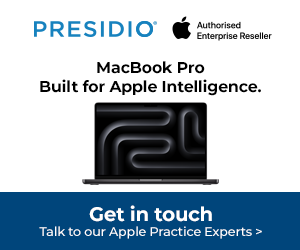Barcoding has become part of our daily lives. Indeed, it requires a mental effort to name a product whose package or label is not emblazoned with regimented bands marching across it. And as supermarkets increasingly expect customers to scan their own purchases through barcode readers at automated checkouts, it is nearly impossible to ignore these ubiquitous stripes.
The barcode, or something similar to the device as we know it today, started out life on the American railway system, where it was used to keep tabs on freight wagons lent and borrowed between different railroad companies. As the rail network spread its tentacles across the vast continent, locating and retrieving individual wagons from far-flung marshalling yards became an impossible task. Enter the barcode. Problem solved. Later a company operating a New Jersey toll highway asked for a similar system so it could track vehicles and bill their owners monthly. If those applications seem prosaic, barcodes have since been put to a variety of uses, limited only by human creativity. Back in the 90s, for example, Japanese schoolgirls had imitation barcodes tattooed on their bodies in a fad that united modern technology with heraldic art.
Barcoding these days involves far more than merely tracking and logging. The technology is poised to become a repository for significant amounts of information as 2D (two-dimensional) barcoding becomes more popular and as RFID (radio frequency identification) gains wider acceptance in industry.
According to Alan Carroll, MD of Waveform Solutions, Irish barcode companies generally sell barcode labelling and reading equipment that includes label printers and “smart labels” (RFID), and scanning devices, as well as software for capturing production line data to link with business systems and databases and to generate sequential numbers.
Carroll said barcoding is mainly used for traceability, particularly in the food and medical sectors. “Barcoding is ubiquitous; you can put a barcode on anything,” he said. “We’re also keeping a close eye on the RFID proposition. There’s a lot of talk about it but it has not taken off as quickly as we had thought; though it will eventually and (will then) be complementary technology to barcoding.”
ADC makes its own labels, and the company claims it is one of the few to do so, describing itself as a hybrid of labelling and barcode company.
Carroll predicts the industry will see increased use of 2D barcoding. “They’re bringing in a new standard of barcode called RSS (reduced space symbology) which will be used to print on pharmaceutical drugs, among other things.” He said the 2D system allowed more information to be packed into a barcode. “The one you see on your chocolate bar wrapping is the conventional type of barcode.”
The type of barcode used for a particular situation depends on the intended use, the form of the data encoded in the barcode, and how the barcode will be printed. The various types of barcode standards are called symbologies. Each symbology (or barcode type) is a standard that defines the printed symbol and how a device, such as a scanner, reads and decodes the printed symbol. Barcode standards define how users deploy barcode symbology in a given situation. For example, ISBN, the standard for labelling books, uses the EAN-13 symbology.
PC Cubed MD Celine Hackett said barcoding had gained widespread usage as falling prices had made the technology more affordable in recent years. It had also become more sophisticated. “A lot of the scanning equipment was going straight on the electronic cash register, but there were limits to what they could do.” And they were expensive, with the scanner costing as much as the register.
“Over the years that has changed. We would now sell a unit at less than half what it cost a decade ago,” said Hackett, adding: “Retail finds that very efficient because the margin is held and pricing is correct.”
Hackett said barcoding makes for a more efficient process for retail and manufacturing, to name just two sectors. She pointed out that tier-one retailers will now not accept any product without a barcode on it. “We’ve all benefited from barcode technology. Look at supermarket checkouts and at how much more efficient they’ve become.”
Hackett also mentioned the newer 2D barcodes and described them as having a “fuzzy pattern” unlike the regular rectangular bars used on conventional codes. She described the 2D barcode as being the size of a matchbox yet able to store the equivalent of an A4 sheet of full text. “Some of the big shipment companies such as DHL are starting to use it.” She said the 2D barcode was more secure and that users concerned about confidentiality were increasingly starting to request 2D barcoding.
Another technology on the horizon is RFID, by now in use for some time. Used mainly on pallets until now, commuters in Dublin and other cities will soon be benefiting from the technology when using toll roads with EasyPass. Hackett described RFID as a great technology “but the price of the chips has not come down to a level where they can be used in daily life. It’s still too expensive to place an RFID tag on a tin of beans, for instance. The big American stores are using it to at least track pallets – a situation where it’s more affordable.”
A variation on the 2D system, also known as a matrix code, is the QR system created and patented by Denso-Wave of Japan. This system has the advantage of being able to be sent to mobile phones and scanned in from the phone. This means it could be used in place of bus or cinema tickets, for tickets.
As frequently happens with new technology, global standardisation has not been an overnight phenomenon. GS1, the standards group whose system is the world’s most widely used supply chain benchmark, is pressing hard for more uniformity. Hackett said: “We have to get unified standards and be able to use the same code across Europe and, over time, link up with the US. This would be ideal in the case of cards encoded with a person’s vital medical information because it could be used globaly.”
The downside, Hackett conceded, was that some people had raised fears about the amount of personal data that was now starting to be routinely stored electronically.
Denis Conway, manager of Visionid said some of the main changes he had seen in the past year were in the area of mobility — particularly hand held barcoding products. He said the “voodoo” often associated with barcode scanners was at last receding as they became more user-friendly. “Now they’ve gone very plug-and-play, and everything is moving towards on-the-go cordless scanners and so on.”
Conway said the market appetite – particularly from channel players – was “huge”, with a lot of competition. “It’s all very healthy. We are finding that, as with mobile phones and computers, this technology is becoming familiar to everyone and is gaining popularity. With that interest comes business,” he averred.
One sector where barcoding technology is having a major effect is in healthcare, including pharmaceutical companies and hospitals. Here the technology can ensure the medicinal supply chain retains its integrity and that the right drug is given to the right person.
At a recent Dublin conference focusing on the European healthcare supply chain, Hugo Bonnar, enforcement officer at the Irish Medicines Board, highlighted Europe’s lack of legislation covering counterfeit medicines – though, as Bonnar noted, it does have laws against fake watches and counterfeit footwear.
GS1, the standards group whose system is the most widely used supply chain benchmark, is striving to set universal standards for track-and-trace technology. It is also working to demonstrate how the technology works and why IT will have a pivotal role in healthcare.








Subscribers 0
Fans 0
Followers 0
Followers